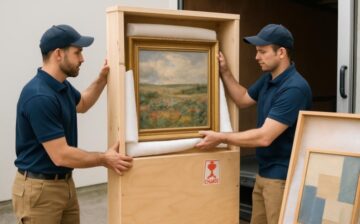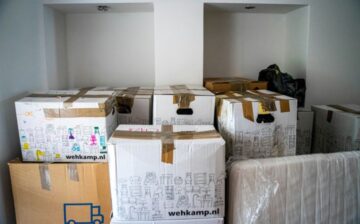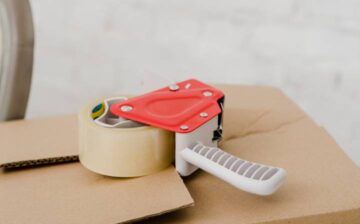We go through many changes in life, including family growth and job changes. Often, these changes call for a move from your current house to a bigger one or a different location. With this transition, you must pack up your house for the move.
Packing can prove challenging as it can take several days to pack the whole house. Additionally, some items, such as furniture and other fragile pieces, will need extra care to ensure they survive the move without damage. You can hire professional movers if you don’t want the hassle of packing, or you can enlist your family and friends to assist. No matter which method you opt for, you can use these tips to protect your furniture during the move.
Preparing Your Furniture for a Move
Before your actual move, you must prepare your furniture to prevent it from getting damaged. Before packing, you must make a plan; first, you might want to consider hiring an interstate moving company to move your items. If you don’t want to do the packing, you can leave the job to them. The best part is they have all the packing supplies, so you don’t have to purchase anything yourself.
Even if you hire professionals to assist, you should still use a checklist to ensure all the items are packed appropriately.
1. Make a Plan
Assess your furniture, determine which furniture needs to be packed, and make a list of the furniture that needs to be disassembled. After this, gather any supplies you need to use for packing.
Take pictures of the items you need to disassemble from all angles. This will come in handy when re-assembling them.
2. Take Inventory of All the Furniture
Before you pack, list all the furniture in your house. This includes beds, couches, sofas, tables, dressers, cupboards, nightstands, and chairs. Ensure that all the items are included in the list; this will help you upon getting to your new home to ensure that nothing was left behind. The best way is to mark them with numbers and include additional notes on the list to ensure you assemble them correctly.
3. Furniture Measurement
After creating the inventory, take measurements of your furniture to ensure the items that you’re packing fit. The measurements will help you when moving as you can easily tell if they fit through the doors and the best place to arrange them in your new house.
4. Disassemble and pack the Furniture
After measuring, assessing, and taking photos of the furniture, you need to disassemble each piece. But, first, you must ensure that all your furniture is clean as you don’t want to move dirty furniture to a new home. Disassembling will make your furniture lighter and less bulky, making it easy to pack and move. You will also be able to protect each item better.
In the case of tables and chairs, disassembling makes it easier to move as the legs make moving them through doors challenging.
For instance, when disassembling a sofa, you need to take it apart by removing the cushions first. You can unscrew the legs as they may be damaged during the move. You can pack your sofa set by wrapping plastic shrink wrap around it. Do this to the cushions too. This will help keep them clean, especially for a long-distance move.
When taking apart chairs and tables, you need to unscrew the legs and wrap each of them with packing paper, then take them and wrap them together with a blanket or packing tape. Ensure that the legs are for the same table or chair. Label them accordingly to avoid confusion when assembling.
You can protect the corners of your furniture using cardboard and secure it with packing tape.
Store the bolts in a zip lock bag to ensure they don’t get lost and label them accordingly to avoid confusion when assembling. You must also take note of each step to make assembling it later easy.
It is best to check the manual before disassembling an item to ensure you are taking the correct steps and avoiding causing damage. If the items are hard to disassemble, it is best to hire experts to ensure no damage comes to your items.
5. Buy Packing Materials
After preparing all your furniture, buy everything you will need to pack your furniture. You can skip this step if you’ve hired a professional mover to transport your items, as they should have everything you might need to protect your furniture. If you’re performing a DIY move, you’ll need the following:
Furniture blankets or pads: These are specifically designed for wrapping furniture and other fragile items during a move. They help protect items against damage from the jostling during transport. If you don’t have a budget for packing blankets, you can use your household blankets, but remember they might get ruined during the move. If you’re renting a truck or storage container, be sure to ask if moving blankets are included with the rental; in many cases, they are provided for your use free of charge.
Bubble wrap: When you buy fragile appliances or furniture, they are usually wrapped in bubble wrap to protect them against damage. So, you may want to buy a few rolls of bubble wrap to protect your furniture.
Cardboard works well to protect furniture, especially tables and chairs, against scratches.
Plastic wrap: After wrapping your furniture with a blanket, you should also wrap it with shrink wrap to ensure the blanket doesn’t come off. You can also use shrink wrap around your dressers and cardboard to keep the drawers closed during the move. The plastic moving wrap also protects your furniture from dust and dirt.
Packing paper: You can place packing paper as the base when packing your items. For instance, when packing your TV, you can place paper below the blanket; since it’s soft, it protects it from damage.
Packing tape: If you don’t have plenty of shrink wrap, you can use packing tape to hold your items together. For instance, when packing table and chair legs, you can use tape to keep them together to make a move easy. You can also apply tape to the corners of your furniture to protect them against damage. Just be sure there is a layer of soft material between the tape and the surface of any of your items to prevent damage to the finish of your furniture.
Cardboard sheets: These are essential for items with glass surfaces as they can protect them against damage. The best part is that cardboard is cheap and can also be found around your house.
6. Pack Your Fragile Furniture Pieces
You must wrap your fragile pieces carefully to protect them from damage when moving houses. Take, for instance, something like a glass table. You need to follow the steps outlined below to pack it properly:
- First, you need to disassemble the items. If it’s a glass table, unscrew the legs.
- Then take the glass and wrap the blanket around it. Secure the blanket using the shrinking wrap or packing tape. You can also pack the glass items using bubble wrap and secure them with packing tape.
- You must start at one end of your glass and make a circumference of the glass. Ensure you’ve covered every part of the glass, top, and bottom.
- While packing your mirrors, you can place strips of masking tape across the mirror glass. This prevents your glass from shattering if you drop or bump it against things.
- For large items, use several blankets.
7. Loading the Furniture onto the Moving Truck
The next step is to arrange items on the moving truck. The best tip is to distribute the weight evenly in the truck to make it easy to steer the vehicle on the road and prevent accidents.
The best trick is to place all the heavy items against the wall of the truck closest to the cab and ensure all the light pieces are placed in the center. This will make loading and unloading easy.
For fragile pieces, such as picture frames and mirrors, it is best to place them between the mattresses to offer them an extra layer of protection. You can use your sofa set cushions if you don’t have several mattresses.
To create space in your moving van, it may be best to arrange couches vertically. This is important if you can’t disassemble the sofas and secure them with straps to prevent them from moving around.
Tips to Protect Your Furniture During a Move
Extra tips to protect your furniture from damage:
- Ensure all glass elements are removed from your furniture and wrapped in moving blankets or bubble wrap. Be cautious when moving the items to avoid dropping them or banging them against things.
- If you can’t remove the glass parts, you can wrap them in cardboard and secure them with tape.
- Take pictures of all the furniture you need to disassemble to make assembling easy.
- The cardboard and bubble wrap absorbs shock when the moving truck hits a bump.
- When it comes to your drawers, prevent the drawers from opening up during the move by wrapping them with plastic moving wrap. This helps immobilize the drawers. As such, you can maximize the space by filling the drawers with non-breakable items.
- Protect the corners of your furniture by wrapping it with cardboard and securing it with packing tape or shrink wrap.
- Take out insurance to protect important furniture pieces against damage or theft.
- Ensure the moving van has plenty of space to accommodate all your items.
Final Thoughts
Moving houses takes time and a lot of planning, as you will need to pack and unpack furniture. The packing is extra taxing as you must disassemble and assemble furniture. For a successful move, you must properly plan your packing and use the right materials to pack your furniture. If possible, you should hire professionals to help you pack and move.
We hope you found this blog post on Tips to Pack and Protect Your Furniture When Moving Houses, useful. Be sure to check out our post on Planning a Perfect Timeline for Moving to a New Home for more great tips!
Have Experience in the Moving Industry? Want an Additional Income Stream? Work With All Around Moving!
All Around Moving’s Work With Us program, provides experienced moving consultants with the opportunity to run their own Relocation Consultant business from anywhere in the USA. We are already licensed, and provide you with a dedicated phone line, email address, moving software for leads management, invoicing, and complete set up.
We’ll even provide the carriers, or you can use your own. A nominal one-time start-up fee of $275.00, gives you the “key” to have your business up and running. There is $125.00 monthly recurring expense, and the cost of purchasing your own type of leads you want to work on. We share profits 50-50 with you from all jobs you book with us. Click here to learn more.






